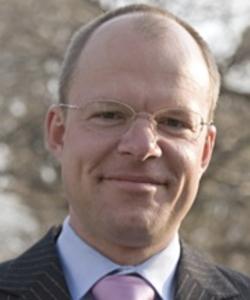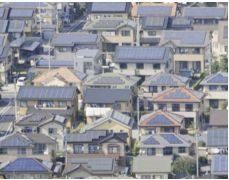
A new energy plan projecting to 2030 leaves major questions over the future of nuclear power in Japan. The Liberal Democrat-led Japanese government of Prime Minister Shinzo Abe is looking for political capital in the long-term decisions it makes about energy following the Fukushima nuclear disaster in March 2011.
JAPAN’S government has taken the first steps, four years after the Fukushima nuclear accident, to clarify the country’s energy strategy until 2030. The last energy plan from 2009 intended to increase the share of nuclear power generation in the energy mix from 31 to 49 per cent. It became obsolete in the wake of the Fukushima disaster. Japan has been nuclear free since 2012.
The shut-down of the entire nuclear capacity has not resulted in rapid de-industrialisation or even economic catastrophe, in striking contrast to gloomy warnings from the ‘nuclear village’- the powerful pro-nuclear lobby comprised of elite bureaucrats, utility executives, academics and journalists. Japan’s energy sector shifted swiftly to fossil fuels and renewables, and no power cut has occurred since 2012.
Japan has become the second-largest market for new solar system installations worldwide in the last two years, after China. Unlike China, its market is accessible to foreign solar module manufacturers, project developers and financial investors. Solar firms from Europe, South Korea and the United States have built significant market positions in the commercial and industrial and mega solar segments.
Solar market
The residential market is dominated by Japanese players, however many of them sell panels made by Chinese or other Asian equipment manufacturers under their own brands.
Japan installed new solar capacity of 9.7 GW, the equivalent of 10 nuclear reactors, or 25 per cent of all new installations worldwide (38.7 GW) in 2014. In comparison, China officially installed 10.6 GW, and the US 6.2 GW, according to the International Energy Agency (IEA). Asia, driven by strong demand from China and Japan, is now the fastest growing solar market in the world. Japan has become an experimental area for breakthrough technologies such as floating solar plants and wind turbines. An ultra large floating wind turbine 20 km off the coast of Fukushima Prefecture was unveiled on June 22, 2015. The turbine, with an output capacity of 7 MW, is the largest piece of wind power generation equipment in the world.

Energy mix
The experimental project was commissioned by the energy ministry (METI) to demonstrate Japan’s technological capability and to open export markets for domestic turbine manufacturers such as Mitsubishi Heavy Industries. The 220-metre high turbine will start operating in September. The undertaking is a consortium led by Marubeni Corporation and could eventually lead to a massive wind farm with 132 floating turbines.
However, Japan’s new energy plan stops short of pushing the capacity and efficiency of renewables in order to replace the nuclear component of the energy mix. The 2009 plan forecast a 19 per cent share of renewables – comprised primarily of hydroelectric, wind, solar and geothermal power. The new plan proposes that renewables should account for 22-24 per cent of the energy mix by 2030. This is, at first glance, not a large step. But the plan actually indicates a dramatic shift in Japan’s energy strategy on two fronts.
Changed view
First, the shift from wind to solar power. METI, the energy ministry, closely connected with the domestic steel and machinery industry and the Ministry for the Environment, has traditionally favoured wind over solar. Solar power has always been seen as decentralised and unreliable, more an accessory for home owners than a serious power source for the world’s third-largest economy.
The government has changed its view, mirroring the strong market trend towards solar power. The new plan expects solar power to constitute seven per cent of generated power in 2030 compared with only 1.7 per cent for wind. Solar power generation capacity needs to rise to 70 GW to achieve this amount of output as against only 10 GW for wind power.
This plan is based on cost estimates which have solar power costs falling from 24.30 yen (US$ 0.20) to between 12.70 and 15.50 yen (US$ 0.10 resp. 0.13) per kWh in 2030. Much smaller price decreases are predicted for wind, to between 13.90 and 21.90 yen (US$ 0.11 resp. 0.18) per kWh in 2030 from 29.40 (US$0.24) today.
Export markets
The wind power lobby protests that METI has taken only onshore-wind facilities into account, and ignored the possibilities for an industry which is increasingly moving offshore, particularly in Europe.This argument has two problems.
Offshore wind power comes at a significantly higher cost that, in the end, would have to be borne by households and/or the corporate sector. Hence, the assumed price decrease is unrealistic if a higher share of offshore – fixed or floating – is presumed. METI also directly supports the development and installation of high-performance offshore wind turbines as a matter of industrial policy, aiming to open export markets for domestic heavy industry and machinery companies.
Second, the uncertainty about nuclear power. METI says nuclear power should account for 20-22 per cent of the energy mix – the first quantitative definition of ‘baseload power’, which the government of Prime Minister Shinzo Abe has been talking about only vaguely since 2013. It is a huge reduction from the previous 49 per cent goal.
It initially suggested a moral victory by the environment- friendly sustainable-resources camp which is seeking to dismantle Japan’s ‘nuclear village’ and to position Japan as a global leader in green technologies. METI proposes that fossil fuels account for the rest of the energy mix – 27 per cent from liquid natural gas (LNG), 26 per cent coal, and three per cent oil. The 20-22 per cent for nuclear power is less than half of 2009’s stated goal, but still on the high side and rather unrealistic for political, economic and technical reasons.
Politically, the ruling Liberal Democrat Party (LDP) has committed itself to the ‘reduction of nuclear power’, which means the party remains pro-nuclear, but also reflects the constant majority of the population against, or at least sceptical of, nuclear energy. Survey after survey confirms that the ‘nuclear village’ has lost the trust of the large majority of the population.
The LDP, focussed relentlessly on staying in power, realised it had to bite the bullet to keep the still- dysfunctional opposition from picking low-hanging fruit and building an effective platform.
Attempts by the power utilities to restart a few reactors in prefectures far from Tokyo have faced fierce political and legal resistance. The locally operating anti-nuclear groups are well organised. They are not represented in the Diet, the national parliament, but they know which strings to pull locally.
Only one argument is left among the arsenal of pro-nuclear reasons emphasised by the utilities and big-business lobbies – the job market in these remote areas along the seashore where fishery is the only other significant income. One such area is the Western seaboard of Kagoshima prefecture, two hours flight south of Tokyo. The two reactors of the Sendai plant were cleared for restart in accordance with strict post-Fukushima guidelines by the newly-created Nuclear Regulatory Authority. Local politicians and authorities, considering the employment situation, have approved the restart which is expected for September.
Decommissioning costs
The restart would be a symbolic event, but it would not open the floodgates for a massive re-nuclearisation as the opposition – and hence the political risk for the LDP – remains. The International Atomic Energy Agency (IAEA) report from May 2015 – which openly criticised the Tokyo Electric Power Company (TEPCO) and the nuclear authorities for knowing the risks at the Fukushima plants but failing to take safety measures – has given the anti-nuclear camp a boost. Economically, the true costs of nuclear energy have become a key issue politically. Four utilities have announced they would decommission five reactors, which were at least 40 years old, rather than apply for a restart which could extend their operating life for another two decades. METI estimates the decommissioning costs would range from US$ 290-670 million per reactor, depending on size, type and condition. Most experts believe these estimates are extremely low. They do not include, for example, the disposal of nuclear waste.
There are no answers so far to the three questions:
• What to do with the spent nuclear fuel
• Where to put the high-level radioactive waste
• Who is going to pay for the decommissioning – utilities, customers or taxpayers.
The government has repeatedly asked local communities to volunteer as a nuclear waste plant, but there have been no volunteers. The remaining nuclear plants will continue acting as storage sites until a final solution has been found – a fancy expression in domestic politics for procrastination ad infinitum, similar to dealing with Japan’s public debt problem.
Unrealistic
Technically, the plan is unrealistic because Japan lacks the nuclear capacity to fulfill the 20-22 per cent goal. Assuming that power consumption grows at the rate of GDP, the total capacity needed in 2030 would be 280 GW. The nuclear capacity of 56-60 GW needed cannot be achieved with the current fleet of 43 remaining reactors – even if all of the 40-year old reactors receive a one-time extension of up to 20 years – which is unrealistic for political, commercial and technical reasons.
Building new reactor plants from scratch is politically out of the question. If re-nuclearisation is assumed, then the most realistic scenario is for 10-15 reactors to be restarted, accounting for 15 GW of power generation capacity, equivalent to six per cent of the energy mix in 2030. This would change to 7-8 per cent if the two plants under construction are added.
Outlook
There are three core scenarios for Japan’s mid-term energy outlook. The first scenario assumes a development in accordance with METI’s proposed energy strategy with nuclear and renewable each accounting for about one-fifth of the generated power. Such an outcome would please traditional pro-nuclear forces, including big business and utilities, and also reflect anti-nuclear public sentiment. The LDP can convincingly argue that the reduction from 49 per cent to 20-22 is a huge step.
However, the probability of this scenario is low as it requires de facto the construction of a fleet of about 20-30 new reactors. This is politically and economically out of the question unless Japan faces an unprecedented ‘oil shock’ which drives dollar prices for fossils so high that Japan cannot afford it anymore.
Political view
The second scenario assumes a complete exit from nuclear energy until the 2030s similar to the exit policies of Germany, Italy and Switzerland. This was suggested by the previous government under Prime Minister Yoshihiko Noda. Japan has been nuclear-free for three years and the population has become accustomed to it. However there is no major political force like the Greens in Germany which focusses on the nuclear exit. If there was such a force, the LDP would not hesitate to give up nuclear if it helped them to stay in power, just like the CDU/CSU in Germany. The party would lose support from the utilities rather than the next general election in 2018. The LDP is inclined to pursue a small-scale re- nuclearisation – as long as the anti-nuclear camp’s pressure does not grow significantly. This implies that the probability of this second scenario is low. The third scenario assumes a restart of 10-15 reactors over the next five years. Such a small-scale re-nuclearisation would appeal to utilities, big business and those arguing that Japan should actively nurture its nuclear technology in order to build up nuclear deterrence if geopolitically required. The restart of 10-15 reactors would not cause the LDP to lose the 2018 election. Under this scenario, financial investors and companies in the renewable energy sector can expect the feed-in-tariff programme to be continued. The tariffs may be reduced further, but the basic support architecture will remain. Big business has practically given up hope of a nuclear renaissance in Japan. The big three in Japan’s nuclear industry- Toshiba/ Westinghouse, Hitachi and Mitsubishi Heavy – target the international market, with little success to date, apart from maintenance and decommissioning. The government-funded sale of nuclear plants to developing countries remains highly uncertain. India, for example, would be interested in acquiring Japanese nuclear technology, but the discussions are futile as India has not signed the non-proliferation treaty. The third scenario is the by far most probable outcome.
This report has been written by Professor Dr Stefan Lippert and made available to our members through the courtesy of © Geopolitical Information Service AG, Vaduz:
www.geopolitical-info.com
Related Reports:
- Germany’s energy transition is at crossroads as it faces phasing out coal
- A delicate balancing act between Japan, South Korea and their East Asian neighbours
- Hopes for cautious reconciliation between east Asia’s key economies
- Hostage crisis fuels debate on Japan’s geopolitical role
www.geopolitical-info.com


